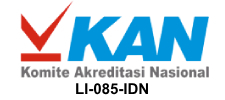LIFTING GEAR / EQUIPMENT INSPECTION

From Oil and Gas Services, Construction, Marine, Shipping, Mining and Engineering Operation, Lifting Gear / Equipment are used by a wide range of different industries for various operations and applications. Often created using high grade materials, most of lifting equipments are designed and manufactured long lasting. However, wherever lifting equipment is used, it will be subjected to some degree of pressure, strain and stress, and needs to be inspected and tested to ensure it is safe and appropriate to use.
Here are the reason why you need to inspect your Lifting Gear/ Equipment:
- Over the time, your lifting gear/ equipment is going to degrade and become slightly dated. With continued use, you may start to see and experience abrasions, corrosion and deteriorations of performance, which is completely natural. Inspections conducted to identify these things before they become damaged.
- Inspections are required by international law! Under the Health and Safety at Work etc Act 1974; Lifting Operations and Lifting Equipment Regulations 1998 (LOLER); and the second the Provision and Use of Work Equipment Regulations 1998 (PUWER); also required by Indonesian Law – Permenaker No. 8 Tahun 2020 tentang Keselamatan dan Kesehatan Kerja Pesawat Angkat dan Pesawat Angkut.
All of the above regulations declare that all lifting applications shall properly planned, which involves utilization of correct equipment that has been properly tested and inspected. LOLER stated that all lifting equipment must be ”safe for use, maintained in a safe condition and inspected to ensure it is correctly installed and does not subsequently deteriorate.” Therefore, to ensure that you stay on the right track of the law, it’s imperative to regularly inspect your Lifting Gear / Equipment.
With more than 185 permanent staff of Lifting Engineer inspector qualification (LEEA Certified, MIGAS Certified / Certified DISNAKER Crane Inspector, EVITA Certified Wire Rope Inspectors, NDT Level II Certified, IRATA or Working at Height Certified, etc) which cover the following:
- Visual inspection and dimensional conformity, Proof Load test, Non-Destructive Test and Destructive Test of Lifting Gears/Accessories such as Wire Rope Sling, Chain Sling, Webbing Sling, Shackle, Hook, Turnbuckle, Master Link, Pad Eye, C-Hook, etc.
- Provision of Inspection and Testing Certification of Lifting Equipment & Lifting Gears (Crane, Forklift, Hooks, Chain Blocks, Wire Rope Slings, Shackles Turnbuckles, etc)
- Inspection of Offshore & ISO Container
- Proof of Load Testing of Lifting Equipment & Lifting Gears with Test Bed machine with capacity up to 1000 tonnes
Did you know that PT Inspektindo Sinergi Persada offers professional lifting gear inspection? If you need to get your equipment inspected, simply contact us!
For more information and questions, do not be hesitate to contact us.
WIRE ROPE INSPECTION
There are two main methods for non-destructive inspection of wire ropes such as Visual Inspection and Electro Magnetic (E-Mag) Examination Technique. The most common method is visual inspection. In visual inspection process, the Wire Rope Inspector will grab the wire rope with a rag and rub the cloth over the length of the rope while checking the condition of the rope. The broken external wire will sticking up. As the Wire Rope Inspector found the little prick, they will stop to analyze the condition of this section of rope closely. Wire rope deterioration may result from normal usage, misuse or as a result from abnormal incident. Excessive wear, broken wire, distortion and corrosion are the common visible external deterioration while internal deterioration is invisible.
For the second method by E-Mag Examination Technique, we offer full length internal wire rope examination to establish the condition of the rope and assess whether it is fit and safe to be remain in service. The technique of Wire Rope Inspection with Instrument utilizes the magnetic principle operation. Magnetic head magnetically saturates section of a rope under test. While the rope is passing through magnetic head, the instrument inspects the rope. Any change in the rope cross-sectional area as well as discontinuities, like broken wires or strands, pits of corrosion etc., cause changes in leakage flux of magnetic field. These changes are detected by magneto-sensitive sensors, which are placed close to the rope midway between the pole pieces of magnetic head. Signals from sensors supply the basic unit where they are processes and displayed.
EQUIPMENT CAPABILITY- Able to inspect wire rope from size range 6-64 mm diameters
- Inspection data logger memory able to hold up to 3,200 meters of rope inspection result
- Maximum inspection speed of a rope is 2 m/second
- Ropes do not have to be cleaned for inspection
OFFSHORE CONTAINER INSPECTION
Offshore Container / Cargo Carrying Unit, a portable unit specially designed for repeated use in transport of goods or equipment to, from or between fixed and/or floating offshore installation and ships (IMO MSC/Circ. 860), can be classified as below:
- General Cargo Container
- Tank Container
- Waste Skip
- Service Container
- Cargo Basket
- Bulk Container
- Gas Rack
- Portable Offshore Unit
Inspection and Testing for Offshore Container will be carried out by LEEA IP7 certified inspector with scope :
- Visual Inspection
- Non-Destructive Examination
- Lifting Test



















